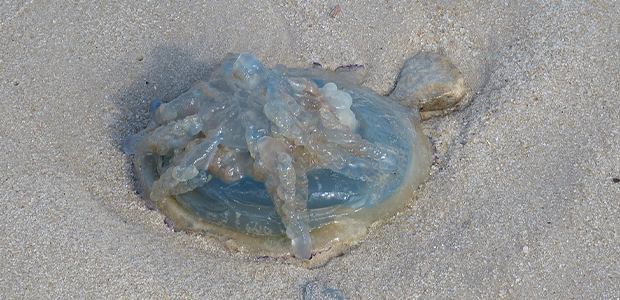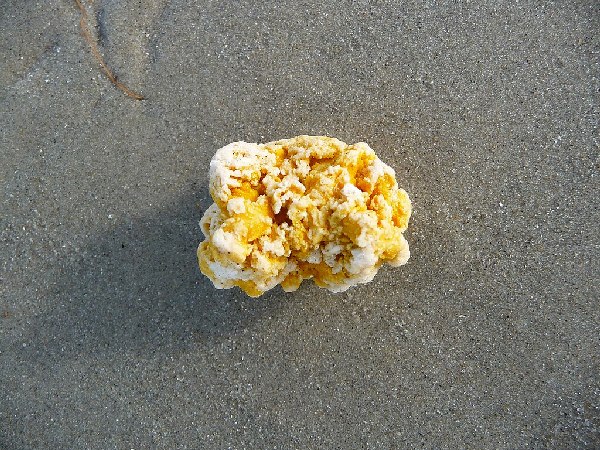Dog-Friendly Beach Safety: 15 Essential Tips for Your Canine Companion
First Published: 23/07/2019
Last Updated: 25/01/2024
Even dog-friendly beaches can be hazardous for dogs, especially on a warm summer’s day, and it's our job to keep an eye out to ensure they're safe. So, let's go over the main things to watch for and how to keep your dog safe and sound at the beach.
Brief summary
- Research beach rules and specific dog regulations before going to the beach.
- Pack essential supplies including a leash and collar, water and bowl, dog-friendly sunscreen, towels and blankets, poop bags, toys and treats, and a dog first aid kit.
- Introduce your dog to water gradually and consider using a dog life jacket for safety.
- Be aware of potential hazards such as sand impaction, seaweed ingestion, jellyfish, heat exhaustion, and sharp objects.
- Avoid letting your dog drink salt water, protect them from sunburn with pet-friendly sunscreen, prevent wasp stings, watch out for palm oil on the beach, and avoid discarded food.
Check the beach rules
Before heading to the beach, research whether dogs are allowed and if there are any specific rules or restrictions you need to follow. Some beaches may have designated dog-friendly areas or are only dog-friendly at certain times of the year. Unfortunately, these are rarely at the height of summer, but dogs can still enjoy the beach during the colder months.
Pack essential supplies
Here’s a list of everything you should pack before heading off:
- Lead and collar
- Water and bowl
- Dog-friendly sunscreen
- Towels and blankets
- Poop bags
- Toys and treats
- Dog first aid kit
Introduce your dog to water gradually
If it’s your dog’s first time at the beach or they haven’t swum before, introduce them to water slowly. You might have to paddle with them initially or toss their ball or toy where they are just past the high water line so they get used to the sensation of moving water on their paws. Watch them closely and ensure they can swim safely.
Use a dog life jacket
If your dog's not a great swimmer or you're planning water activities, a dog life jacket can be a good idea. It gives extra buoyancy and keeps them safe. When choosing a jacket, ensure the buoyancy is around the neck and chest to keep their head above water.
Remember, not every dog likes the sea. Always let your dog decide what they're okay with at the beach. Don't force them if they're uneasy or don't like the water. There's lots of fun to have on land, like digging, running, or just chilling with you.
Ever heard of sand impaction?
This happens when a dog swallows too much sand, often while repeatedly picking up a wet ball or toy at the beach. Just like sand won't easily flush down a toilet, it can get stuck in your dog's intestine. Sand impaction can be serious and is surprisingly common. If it happens, your dog might need emergency vet care. So, watch how much sand your dog could be swallowing while playing at the beach.
Don’t let your dog eat seaweed
Some dogs just can’t help but eat anything edible, but seaweed is not recommended. If eaten dry, it can swell up inside the dog’s stomach and become stuck in the intestine, which may eventually rupture.
Watch out for jellyfish

Before heading to the beach, do a quick check online and if the beach is known for jellyfish, pick another spot. Always keep an eye on the water, and don't let your dog go too far in.
Even washed-up, dead jellyfish can sting. Training your dog to "leave" something and having good recall can stop them from getting stung. Jellyfish stings are incredibly painful, so if your dog gets stung, use seawater to clean the area and prevent further toxins from releasing. After that, reach out to your vet to get the sting checked.
Beware of heat exhaustion
High temperatures, loads of exercise, and lack of shade at the beach can lead to potentially fatal heatstroke in dogs. Always have fresh water for your pup and take regular breaks in the shade. If you're sunbathing, ensure there's a cool, shady spot for your dog.
Watch out for sharp objects
Broken bottles or discarded items can be hard to spot at the beach. If your dog gets a bad cut, contact your vet right away. Always bring a dog first aid kit to bandage wounds while heading to the vet.
Fish hooks are especially dangerous
Dogs are often attracted to the tasty bait on the end of fish hooks or they can swallow them inadvertently if they pick up a dead fish. But if a barbed fish hook gets embedded in their mouth, throat, or stomach, they’ll need urgent veterinary treatment to remove it.
If your dog swallows a fish hook, don't try to pull it out — and never pull or cut a fishing line coming from your pet's mouth. If the line is long, collect it and tie it to your pet's collar to prevent swallowing before heading for your nearest vet.
Don’t let your dog drink salt water
Avoid letting your dog drink seawater. It's really salty and can lead to dehydration if your dog drinks too much. In less serious cases it can cause diarrhoea. Too much salt can cause dizziness, seizures, confusion, and vomiting in dogs. Be careful if you are throwing balls or other toys into the sea as dogs will naturally swallow seawater when picking these up.
Bring your dog's bowl and fresh water, and offer it often. This will keep your dog from getting too thirsty.
Sunburn isn’t just for humans
It’s important to be aware that dogs can get sunburnt, too, especially those with white or pale fur, and where fur is thin over the nose and ears. Consider getting your dog some special pet-friendly sun cream.
Prevent wasp stings
A beach trip wouldn’t be a beach trip without fish and chips and ice cream, but they can attract wasps, increasing the chances of stings. Keep a close eye on your dog and stop them from sniffing around bins or discarded food that might be wasp hotspots. The "leave" command and good recall are key to keeping your dog safe.
If your dog gets stung, keep an eye on them. It's a good idea to visit your vet if they have a bad reaction, this may include severe swelling, difficulty breathing or signs of pain. If the sting is on the face or mouth please call your vet for further advice.
Do you know about palm oil?
Palm oil, which is used in food, cleaning supplies and cosmetics, is often dumped by ships offshore before being washed up on beaches during a storm. It typically looks like pebbles or rocks, smells of diesel, and is white and waxy. It’s dangerous for dogs to eat because it can cause nasty stomach blockages. If you think your dog has eaten palm oil, take them to the vet.

Image by 4028mdk09 on wikipedia commons
Avoid discarded food
Many human snacks aren't good for dogs, especially if they're mouldy or sandy. Keep an eye on your surroundings and your dog to ensure they don't eat anything harmful. It’s a good tip to take dog treats with you to the beach. They'll satisfy your pup's cravings and help bring them back when you call.
Leave no trace
When taking your dog to the beach, always follow the 'Leave No Trace' principal
Pack poo bags. Dog waste can harm the beach ecosystem. Picking up and disposing of their poo properly will help keep our beaches clean and prevent contamination of the sand and water, meaning that wildlife and other beachgoers can use the beach safely.
Need more info?
If you notice your dog is behaving strangely after a day at the beach, give your vet a call straight away.
Find your nearest vet using our Find a Vet page, or speak to a vet online using Online Vets.


